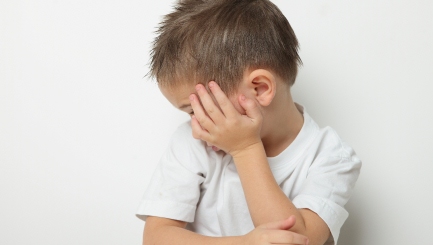What To Look Out For If You Suspect Your Child Is Autistic
 Autism in one child can affect family wellness in a big way, and in order to lessen the wellness effects as much as possible, it is paramount that Autism Spectrum Disorder (ASD) is diagnosed as early as possible. With a quick diagnosis, early learning intervention can be introduced, and though diagnoses are not typically reached until a child is between 2-3 years old, researchers at the Kennedy Krieger Institute have listed 10 signs of autism in 6-12 month old infants that you can watch for.
Autism in one child can affect family wellness in a big way, and in order to lessen the wellness effects as much as possible, it is paramount that Autism Spectrum Disorder (ASD) is diagnosed as early as possible. With a quick diagnosis, early learning intervention can be introduced, and though diagnoses are not typically reached until a child is between 2-3 years old, researchers at the Kennedy Krieger Institute have listed 10 signs of autism in 6-12 month old infants that you can watch for.
Researchers from the Kennedy Krieger Institute, the Johns Hopkins University School of Medicine, the Johns Hopkins Bloomberg School of Public Health, and the Aging Brain Centre at the Institute for Aging Research and Hebrew Senior Life at Harvard Medical School have collaborated to determine if there were any patterns of ASD development during the first three years of life between children with and without ASD, and what was the earliest period possible that ASD can be diagnosed in children.
The Kennedy Krieger Institute issued a statement which outlined the study of ‘204 infant siblings of children with ASD, who are at a higher genetic risk for developing ASD, and 31 infants with no family history of ASD. The infants were examined at 6, 14, 18, 24, 30 and 36 months of age. Confirmation of ASD classification was made at the 30 or 36 month visit for all participants because diagnosis at this age is considered definitive. At each visit, researchers evaluated the infants for motor, language, communication, social-affective and symbolic abilities, as well as typical symptoms of ASD.’
The infants were categorised into three groups consisting of Early-ASD, Later-ASD and Non-ASD after the data was collected, and the results were that at 6 months, all groups of children showed comparable development, but at 14 months, the Early-ASD group diverged from Non-ASD development in all measured aspects of development, except for fine motor functioning, and showed significantly lower expressive language and shared social smiling scores than the Later-ASD group, who had significantly lower scores than the Non-ASD group’s for fine motor and some language skills. At 18 months, the Early-ASD group exhibited greater delays in receptive and expressive language development compared to the Later-ASD group, but this gap closed by 24 months due to increasing impairment in the later-ASD group and there were no detectable differences between the Early- and Later-ASD groups at 30 and 36 months.
According to Dr. Rebecca Landa, the study’s lead author and director of Kennedy Krieger’s Centre for Autism and Related Disorders, ‘If parents aren’t seeing their children steadily develop new skills, they should talk to their paediatrician or contact their local early intervention programme’. Also, if an older sibling is diagnosed with autism, then the likelihood of the younger sibling developing autism is increased and should be carefully monitored.


Comments are closed.